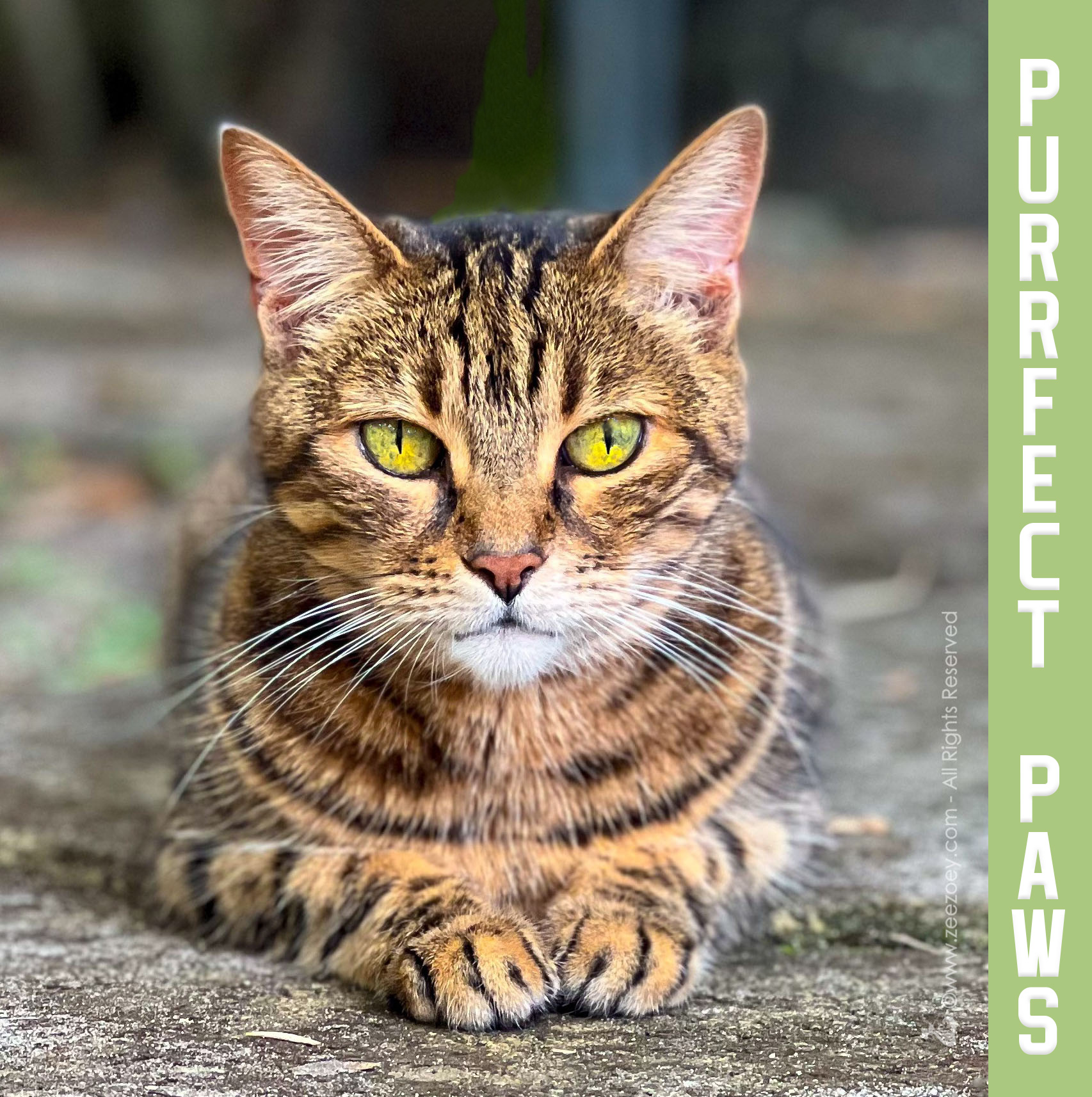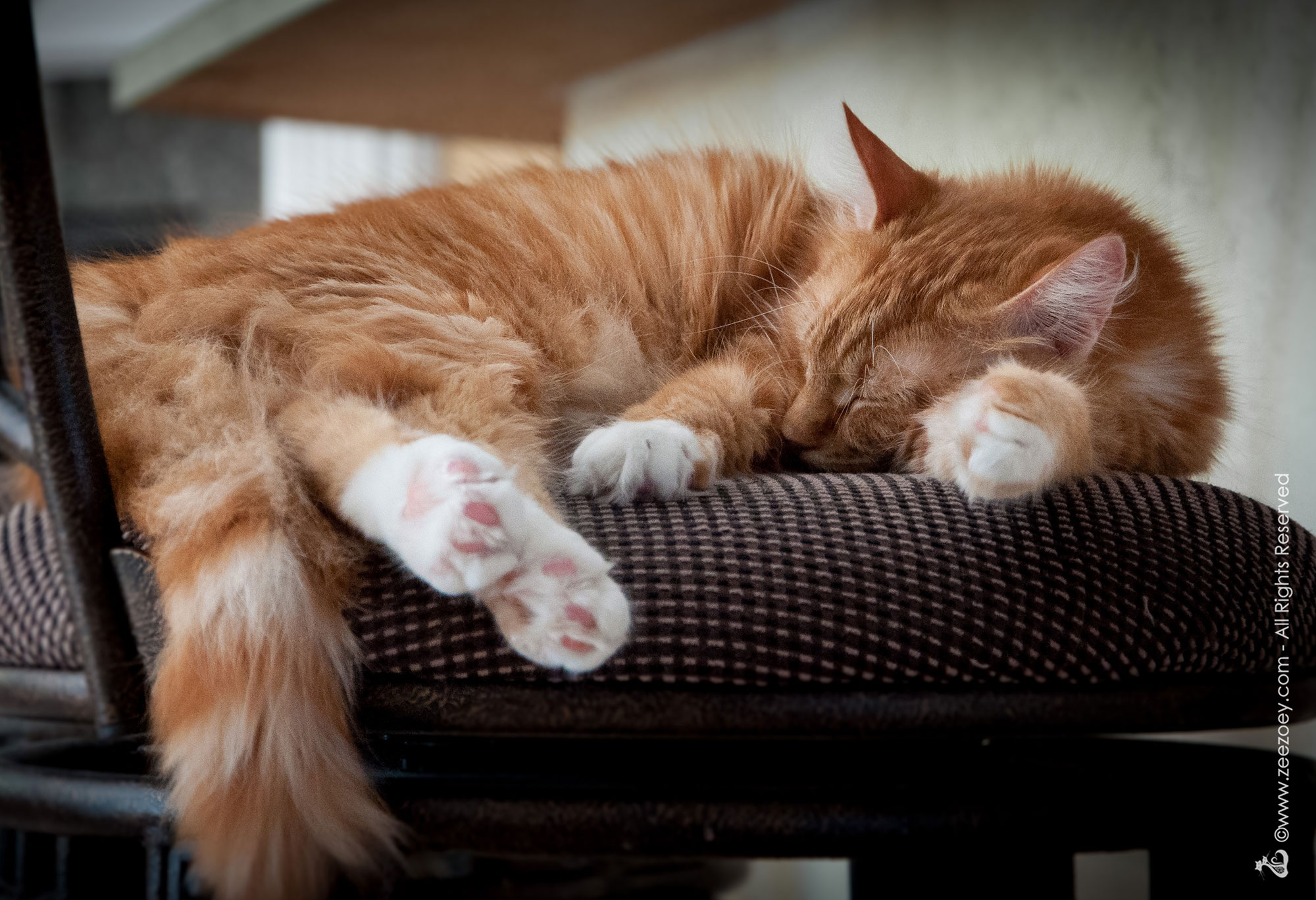Applause for Cat Paws – 10 Fun Facts About the Purrfect Paw!
I must admit it. I’m completely obsessed with my cat Mia’s paws. There is just something about them. So precious, pretty, sweet, dainty, and adorably perfect, that I could stare at them all day. But her paws and the paws of all cats are so much more than something for me to fuss over. They are a multi-functional, highly intuitive part of a cat, integral to their very survival. Here are 10 fascinating facts about the pawsome paw:

1. They Protect a Cat’s Claws. A cat has claws for many reasons. Without them, it affects their health, well-being, personality, and behavior. Cat paws ingeniously sheath claws until needed to hunt or scratch. According to Dr. Sarah J. Wooten, DVM, CVJ, a consulting veterinarian for Big Barker in an article for Chewy.com, “This means the claws can stay sharp and protected when a cat isn’t using her claws, but when she runs, climbs or jumps, the paw pads release the claws, which have the extremely important job of gripping the ground and other surfaces, so she doesn’t fall or lose her balance.”
2. Front Paws Have More Digits Than the Back and Paws Can Have Extra Toes. Each front foot has five digits (toes) and four on each back foot, for a total of 18 digits. If you look closely, you’ll find an extra little “toe” on the front paws, too. These are called dewclaws and are like thumbs for cats. They’re located a bit higher up than the other toes, with the primary function of hunting; even if it’s just tossing around a cat toy in the house. Some cats referred to as polydactyl, have as many as six or seven toes on each paw. They are also known as “Hemingway cats,” after the white six-toed cat that was given to author Ernest Hemingway in the 1930s by a sea captain named Stanley Dexter when he lived in Key West, Florida. Currently, approximately 40-50 polydactyl cats live at the historic Hemingway home.
3. Paws Help With Grooming. Cats are fastidiously clean, and their paws and forelegs are perfectly built-in grooming tools to help them clean those hard-to-reach areas behind ears, under chins, on necks, and on faces. First, they lick a paw. Then they rub the paw repeatedly in a circular motion over each area and repeat as needed.
4. Cats Have Dominant Paws. Marilyn Krieger, Certified Cat Behavior Consultant shares in an article for Catster, “Although studies differ as far as the percentages of cats who are right, left, or ambidextrous, they all agree cats have paw preferences, especially when they are performing challenging tasks. One study, conducted by Queens University in Ireland, correlates gender with paw dominance, with data showing male cats prefer to use their right paw, whereas females go with the left.” Is your cat a righty or lefty? Give him a challenge, such as fishing tasty treats out of hard-to-reach places, and track which paw he typically uses. Krieger says you’ll need to replicate the task at least 75 times for the accuracy, but honestly, what cat is going to argue the over-again chance for a yummy morsel?

I know from the numerous times my male cat, Rolz, taps my shoulder when I walk past him, that he’s a righty.
5. Cat Beans are Sensitive and Sweaty. Yes, it’s true, a cat’s paw with its ridiculously cute toe beans as they’re frequently called, acts as a cooling system by sweating to help keep them from overheating on hot days. Frightened and stressed cats also sweat from the bottoms of their paws; something you might notice, for example, when your cat leaves little wet pawprints on the exam table at the vet. These cute beans are also highly sensitive. They are home to large concentrations of nerve receptors, making them finely tuned sensory organs that aid in hunting and maintaining balance. These receptors allow kitty to feel texture, pressure, and possibly vibrations through their paw pads, helping them evaluate the liveliness and proximity of prey. But, according to Krieger, sensitivity comes at a cost. “Although cat paw pads are strong enough to protect cats against some environmental damage, they are very sensitive to temperature, pressure, and pain. The soft pads are not insulated and can be severely injured by hot pavements, frozen sidewalks, and ragged surfaces.”
6. Cats Walk on Their Tippy Toes. Cats are digitigrades. In cat speak, that means they navigate their world on tippy toes to up the odds of survival and a good meal. Simply put, walking on their toes (a trait shared with dogs, hyenas, pigs, hippos, elephants, and even dinosaurs) makes them quieter and faster, which makes them better hunters, and better able to avoid predators.

Does your cat appear to bounce when he walks, like Zee, here? That’s because they walk on their tippy toes.
7. Cat Paws Absorb Shock. We’ve all heard that cats land on their feet after jumping/falling and part of that is attributed to the marvel of the bean. Paw pads contain lots of fatty, squishy tissue, allowing them to absorb the shock of a hard fall. This also helps them to prowl silently while stalking prey.
8. Cat Paws are Highly Flexible. For survival, cat paws are designed for utmost flexibility, as the bending helps them hunt and climb. That’s why they are champion tree climbers. Their front paws can quickly turn inward to sink claws into branches, helping them to maintain stability. Unfortunately, there is a flaw. Although it works for climbing up trees, the descent is a different matter, and that’s why cats back down from trees as their front claws face in the wrong direction for a head-first downward climb. This is why cats sometimes get stuck up in trees but isn’t that what the fire department is for?

Zoey has her claws firmly entrenched in this tree. Don’t worry, I was there to help get her down if need be!
9. Cat’s Paws are Used to Communicate. Most anyone who has a cat can relate to a paw tap on the face, arm, leg, or shoulder, a gentle reminder that food or attention is in order. But cats also use their paws as a means of communication to mark their territories and leave information about themselves. They do this by kneading (“making biscuits”) and scratching on things, a motion that activates the scent glands tucked between their toe beans. This act deposits their unique thumbprint; a special mix of pheromones, that other cats can detect they’ve left behind. Surrounding themselves with their familiar scent is calming and reassures them they are still the king or queen of the castle.
10. Paw Pads are Usually the Same Color as Fur Color. The pigments that make up a cat’s fur, or sometimes the nose, are the same colors that generally match the paw pads. White cats usually have light pink pads. Gingers tend to have pink or orange pads. Black kitties have black pads and gray cats have gray pads. Tuxedo cats can have pink, pinkish-white, black, or a mix of these colors on their paw pads. Cats with multiple fur colors, like Tortoiseshell or Calico, will have a variety of color combinations. Maybe two pink jellybeans and the rest black, or multi-colored pads and toes. Solid-colored cats have paw pads that match the color of their noses and tabbies may have brick red or gray pads. However, according to Cat Care World, there can be exceptions to the norm and it is not uncommon for a cat’s pads to change colors for a multitude of reasons. Some include:
–Genetics/Hereditary. Some breeds, for example, Siamese, are prone to vitiligo, a condition, according to Dr. Margret Casal, associate professor of medical genetics at the University of Pennsylvania’s School of Veterinary Medicine in Philadelphia, that causes white spots of pigmentation, which may cause cats to turn entirely white, including the paw pads. Those with the condition may pass the gene on to their offspring resulting in the occurrence in future generations.
-Injuries. If your cat is constantly licking its feet or if there is an unpleasant odor coming from the cat’s feet, he may have sustained an injury that could affect a paw’s natural color.
-Illnesses/Diseases. Anemia, viruses, bacterial infections, cancer, and more can all change the color of a paw pad. Anemia can cause the paw pads to turn pale pink, or even blue-gray as a result of a low red blood cell count, and some bacterial infections can cause the pads to become yellowish-brown and crusty. Cancer can also change the color of your cat’s paw pads. 21Cats.org, elaborates, “Melanoma may darken or develop black spots on their paws and squamous cell carcinoma may cause ulcers that affect the color of their paws.”
-Environment. With a cat’s paws being so sensitive, they are suspectable to environmental conditions, including exposure to toxins and chemicals, as well as damage from the sun if a cat is outside in direct sunlight; something that can lead to discoloration or even peeling of the skin. Furthermore, extreme hot and cold temperatures can cause changes in the color of a cat’s paw pads. And if your cat is walking across surfaces that have been treated with cleaning agents, such as bleach, this may cause their paw pads to lose their natural hue.
-Aging. As cats grow older, their paw pads may take on a new hue. Dark-colored paw pads may lighten due to fading pigments, for example, and not all color changes will be necessarily uniform across each paw pad.
-Obesity and Lack of Exercise. It might not seem obvious, but overweight cats are not just susceptible to diabetes, heart disease, hypertension, cancer, osteoarthritis, and more, but they can be prone to discoloration of the paw pads. According to 21Cats.org, this condition, known as dermal melanosis, occurs when an accumulation of fat builds up underneath the paw pads, causing them to turn yellow or brown; typically due to an imbalance between calories consumed and calories burned.
In most instances, the gradual changes in coloration should not be of concern, but if you notice a sudden discoloration in your cat’s paw pads, it’s important to take action and bring your cat to your veterinarian for advice and support.
Thank you for reading and I hope you enjoyed this article and learned a bit more about the adorable, yet highly efficient and multi-faceted paw pad!
For more information on why claws are so important for a cat, please check out this article:
Safe Alternatives to Declawing Your Cat for Declaw Awareness Day
For more information on why cats make biscuits and other fun and weird habits, please be sure to check out our award-winning book, Makin’ Biscuits – Weird Cat Habits and the Even Weirder Habits of the Humans Who Love Them.

































Thoroughly enjoyed this post about cat paws…we all love those toe beans. I am a fan of big-pawed cats. Of the 22 Kitties Blue, we’ve only ever had one with delicate, little paws, and she had the loudest paw steps of any cat we’ve had. That was Louise. Also enjoyed seeing your beautiful kitties. XOCK, angel Lily Olivia, angel Mauricio, Misty May, angel Giulietta, angel Fiona, Astrid, Lisbeth, Calista Jo, Cooper Murphy, Sawyer, Kizmet, Audrey & Raleigh
Fascinating post about fascinating kitty pawpads! We had a tabby who had an area or two of reddish fur amidst her stripes. Some of her pads were multi-color, and quite beautiful.
Very informative — and of course I love the photos, especially the one of gorgeous panfur Shadow!
When our furmily was larger, there were a lot of cat stampedes up and down the main hallways of our houses–nothing quiet about those! and now that Elvis is an only cat, I can always hear him stomping into the kitchen.
Some cats have variegated paw pads! Several of our beloved ones have had these.
Wishing you all a good weekend!
Great post. I love seeing toe beans, so cute.
Those were all fun and interesting, terrific post!
So interesting!